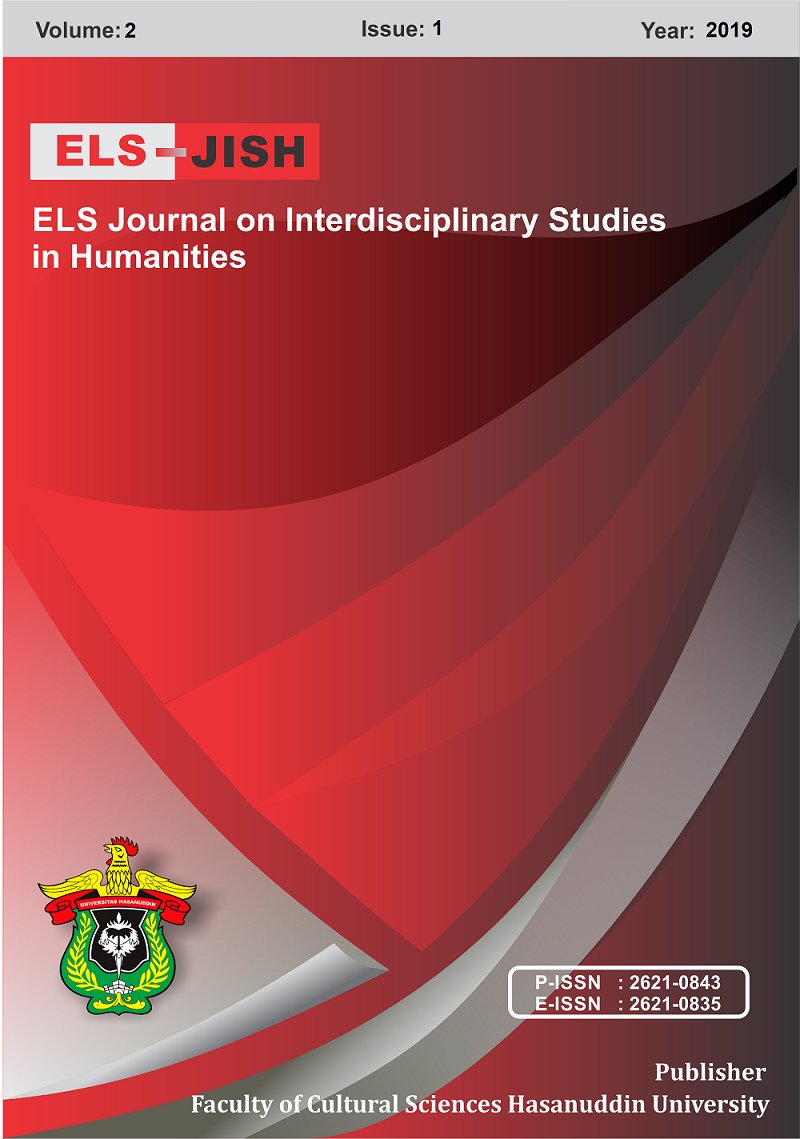Similar Articles
- Farah Novianty, A Comparative Study on Personal Deixis of English and Tukang Besi Language , ELS Journal on Interdisciplinary Studies in Humanities: Vol. 1 No. 2 (2018): June
- Ayad Hameed Mahmoud, Alyaa Husein Abd Fatah, A Stylistic Study of Situational Elements in Selected American Creeds , ELS Journal on Interdisciplinary Studies in Humanities: Vol. 6 No. 1 (2023): March
- Siti Hajar Larekeng, Abdul Hakim Yassi, Muhammad Najib, Badaruddin Badaruddin, Exploring The Millennial Learners’ Attributes and Needs in Educational Environment , ELS Journal on Interdisciplinary Studies in Humanities: Vol. 2 No. 3 (2019): SEPTEMBER
- Tira Nur Fitria, Translation Technique of English to Indonesian Subtitle in “Crazy Rich Asian” Movie , ELS Journal on Interdisciplinary Studies in Humanities: Vol. 3 No. 1 (2020): MARCH
- Yulius Nahak , Barli Bram, Gricean Maxim Violations in a Javanese Song Entitled Slénco , ELS Journal on Interdisciplinary Studies in Humanities: Vol. 4 No. 3 (2021): SEPTEMBER
- Serliah Nur, Muh. Taufik, Sakina Al Munawara, Linguistic Code Mixing: A Study of an Australian YouTuber , ELS Journal on Interdisciplinary Studies in Humanities: Vol. 6 No. 3 (2023): SEPTEMBER
- Adriana Tunliu, Seprianus A. Nenotek, Naniana N. Benu, Study of Church Name in Kupang City: Linguistic Landscape Approach , ELS Journal on Interdisciplinary Studies in Humanities: Vol. 5 No. 4 (2022): December
- Siti Rachmi, Abdul Hakim Yassi, Sukmawaty, An Analysis of Lexical Collocation in King Charles’ Speech , ELS Journal on Interdisciplinary Studies in Humanities: Vol. 6 No. 2 (2023): JUNE
- Nurhayati Nurhayati, Morphological Proses of Wolio Language in Kabanti Nuru Molabi , ELS Journal on Interdisciplinary Studies in Humanities: Vol. 4 No. 1 (2021): MARCH
- Suaib Suaib, The Use of Hedging Devices in Literature Review Sections of Undergraduate Thesis , ELS Journal on Interdisciplinary Studies in Humanities: Vol. 2 No. 1 (2019): MARCH
<< < 2 3 4 5 6 7 8 9 10 11 > >>
You may also start an advanced similarity search for this article.






